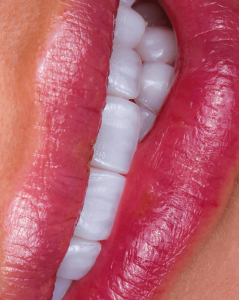

Turkey has swiftly emerged as a global hub for medical tourism, with dental surgery standing out as one of its most sought-after services. Not only does the country boast state-of-the-art dental facilities, but it also offers these treatments at significantly lower costs than many Western nations.
High-Quality Care: Turkish dental clinics often equip themselves with the latest technology and adhere to international standards of care. The dentists are well-trained, with many having completed their education and training in Europe or the US. This ensures patients receive care comparable to, if not exceeding, what they might experience in their home countries.
Affordability: One of the primary reasons patients flock to Turkey for dental surgery is the cost. Even after factoring in travel and accommodation expenses, undergoing dental procedures in Turkey can result in substantial savings.
Wide Range of Procedures: Whether it’s cosmetic dentistry, implants, orthodontics, or more complex surgical procedures, Turkey’s dental clinics offer a comprehensive array of services to cater to both functional and aesthetic needs.
Tourism Opportunities: Combining dental treatments with the chance to explore the rich cultural heritage of Turkey is an attractive proposition for many. Historic sites like the Hagia Sophia, the bustling bazaars of Istanbul, or the serene beaches of Antalya can make the trip doubly rewarding.
Ease of Travel: Turkey’s strategic location makes it easily accessible from Europe, Asia, and the Middle East. Major cities like Istanbul and Ankara are well-connected through international flights, making the journey for dental tourism convenient.
Cultural Competence: With the influx of international patients, dental clinics in Turkey often have multilingual staff and offer assistance in various languages to ensure effective communication.
Recovery Resorts: Some dental clinics in popular tourist destinations partner with luxury resorts to offer specialized recovery packages. This allows patients to recuperate in a serene environment, often with views of the Mediterranean or Aegean seas.
However, like any medical procedure abroad, it’s essential for patients to conduct thorough research, check reviews, verify the credentials of the dental professionals, and possibly even seek recommendations. Proper planning ensures not just a memorable trip to Turkey, but also a successful and satisfactory dental procedure.
Implantology
Implantology is a specialized field within dentistry that focuses on the study and application of dental implants. Dental implants are surgically placed prosthetic devices that serve as substitutes for the roots of missing teeth. They provide a foundation upon which fixed or removable prosthodontic devices, such as crowns, bridges, or dentures, can be mounted.
Key aspects of implantology include:
Dental Implants: Typically made of titanium, dental implants are biocompatible and fuse with the jawbone through a process called osseointegration. This fusion provides a stable foundation for the replacement tooth.
Types of Dental Implants:
Bone Augmentation: Due to bone loss after tooth extraction, some patients might lack the necessary bone quality or quantity to support implants. In such cases, procedures like bone grafts, sinus lifts, or ridge expansion might be used to improve bone architecture.
Immediate Load Dental Implants: Also known as same-day implants or Teeth in a Day®, this procedure allows for the placement of a temporary tooth during the same visit as the dental implant.
Mini Implants: Smaller than the conventional implants, mini implants are often used to secure lower arch dentures.
All-on-4®: This is a specific treatment protocol that uses only four implants to replace all teeth in an arch, often avoiding the need for bone grafts.
Advanced Training: Implantology requires specialized training beyond general dentistry. Dentists often undergo postgraduate programs or courses dedicated to implant procedures, surgical techniques, and prosthodontic rehabilitation.
Multidisciplinary Approach: Implantology often involves a collaborative approach, with periodontists, prosthodontists, and oral surgeons working together to ensure optimal results for patients.
Advanced Technology: Implantology frequently employs advanced diagnostic tools like cone-beam computed tomography (CBCT) scans to precisely plan the implant placement. Guided surgery using computer-aided design and manufacturing (CAD/CAM) may also be used for enhanced accuracy.
Implantology offers a durable and functional solution for missing teeth, with success rates higher than 95% for most patients. Dental implants not only restore aesthetics but also prevent the bone loss that often accompanies tooth loss, thus preserving facial structures and promoting oral health. However, proper assessment and planning are crucial, and not all patients may be suitable candidates for implants, necessitating a thorough evaluation before proceeding.
Prosthodontics
Prosthodontics, also known as dental prosthetics or prosthetic dentistry, is one of the nine dental specialties recognized by the American Dental Association (ADA). It focuses on the design, manufacture, and fitting of artificial replacements for teeth and other parts of the mouth.
Key aspects of prosthodontics include:
Restoring Oral Function and Aesthetics: Prosthodontics aims to restore the patient’s ability to chew, speak, and smile with confidence by replacing missing teeth and oral structures.
Dental Prostheses: These are the devices prosthodontists use to replace missing teeth. Examples include:
Maxillofacial Prosthetics: An advanced sub-specialty of prosthodontics that focuses on rehabilitating patients with defects or disabilities that were present at birth or developed due to disease or trauma. This includes prostheses for the face, palate, and even parts of the ears and eyes.
Cosmetic Dentistry: While all dentists can perform aesthetic procedures, prosthodontists receive extensive training in techniques and procedures to enhance the appearance of one’s smile.
Temporomandibular Joint Disorder (TMD) Treatments: Some prosthodontists specialize in treating issues related to the temporomandibular joint, which connects the jaw to the skull.
Advanced Training: After completing dental school, prosthodontists undergo an additional three years of full-time advanced graduate training in a prosthodontic residency program. This specialized training ensures they are experts in restoring and replacing teeth.
Interdisciplinary Approach: Prosthodontists often work closely with other dental specialists, such as periodontists (gum specialists), orthodontists (alignment specialists), and oral surgeons to ensure comprehensive care.
Patients who have complex dental needs, congenital anomalies, traumatic injuries, or desire cosmetic enhancements often benefit from the specialized skills of a prosthodontist. Their expertise ensures that patients not only achieve optimal function but also aesthetically pleasing results.
Endodontics
Endodontics is a specialized branch of dentistry that deals with the diagnosis, prevention, and treatment of diseases and injuries of the dental pulp (innermost part of the tooth) and the tissues surrounding the roots of a tooth. The term “endodontics” originates from the Greek words “endo” meaning inside and “odont” meaning tooth.
Key aspects of endodontics include:
Root Canal Treatment: This is the most common procedure associated with endodontics. If the dental pulp becomes diseased or injured, it may lead to infection and pain. During a root canal treatment, the infected pulp is removed, the inside of the tooth is cleaned and disinfected, and then it’s filled and sealed to prevent future infections.
Endodontic Retreatment: In cases where a root canal therapy fails or complications arise, a retreatment may be necessary. The tooth is reopened, the previous filling material is removed, the canal is cleaned, reshaped, and then filled and sealed again.
Endodontic Surgery: Some conditions or complications might necessitate surgical interventions. One common procedure is an apicoectomy, or root-end resection, which involves removing the tip of the root and sealing the end.
Traumatic Dental Injuries: Endodontists are skilled in handling dental traumas, which might include repositioning and stabilizing teeth or saving a tooth that has been knocked out.
Diagnosis of Dental Pain: Not all toothaches result from infections or decay. Endodontists are trained to diagnose the cause of oral and facial pain, which can sometimes originate from other sources.
Advanced Training: Endodontists typically complete two to three years of additional postgraduate training after dental school. This specialized training focuses on diagnosing tooth pain and performing root canal treatment and other procedures related to the interior of the tooth.
Advanced Technology: To increase the efficiency and effectiveness of treatments, endodontists often use cutting-edge technology such as digital imaging, operating microscopes, and ultrasonics to visualize, clean, and seal intricate root canal systems.
Patients experiencing severe tooth pain, sensitivity to hot or cold, swollen gums around a tooth, or discoloration of a tooth might require endodontic attention. The primary goal of endodontics is to save the natural tooth, as preserving the original structure often leads to better functionality and aesthetics compared to alternatives.
Dental prosthetics, often simply referred to as dental prostheses, encompass a range of devices designed to replace missing or damaged teeth, restore function, and enhance aesthetics. These prostheses are essential in the field of dentistry as they enable individuals to chew food, speak clearly, and smile confidently.
Types of Dental Prosthetics:
Dentures:
Dental Crowns: A cap that covers a damaged or decayed tooth to restore its shape, size, strength, and appearance. They can be made from a variety of materials, including porcelain, ceramic, metal, or a combination of these.
Dental Bridges: These are used to replace one or more missing teeth by spanning the space where the teeth are absent. Bridges are anchored to the natural teeth or implants surrounding the empty space.
Dental Implants: While not a prosthetic in themselves, dental implants serve as artificial tooth roots. Prosthetic teeth, like crowns or bridges, can then be anchored securely to these implants.
Overdentures: A type of removable denture that is supported by and attached to either a few remaining natural teeth or dental implants.
Fixed Partial Dentures (FPDs): Commonly referred to as “bridges,” these are non-removable prostheses that are attached to remaining natural teeth.
Implant-Supported Prosthetics: This can be single crowns, bridges, or even full arch restorations that are anchored securely to dental implants for enhanced stability.
Considerations in Dental Prosthetics:
Functionality: Prosthetics should restore the patient’s ability to chew and speak properly.
Aesthetics: A natural appearance is a critical aspect, especially for anterior (front) teeth replacements.
Comfort: The prosthetic device should fit well and not cause discomfort or irritation to the surrounding oral tissues.
Durability: Dental prosthetics are designed to withstand the forces of biting and chewing and should be resistant to wear and tear.
Material Selection: Different materials have different properties, and the choice often depends on the location of the replacement, patient’s preference, and cost.
Maintenance: Some prosthetics, like dentures, require specific care routines to ensure their longevity and maintain oral health.
The field of dental prosthetics has seen significant advancements over the years. With the advent of digital dentistry, computer-aided design (CAD) and computer-aided manufacturing (CAM) technology, and innovative materials, the fit, function, and aesthetics of dental prostheses have greatly improved, offering patients solutions that are more effective and lifelike than ever before.
Please enter your details below. Our representatives will reach and help you with your request.